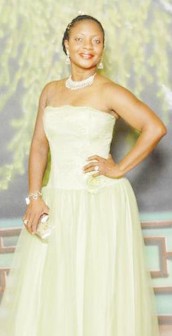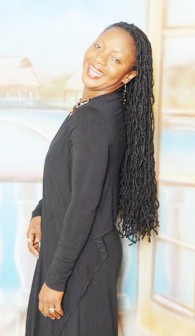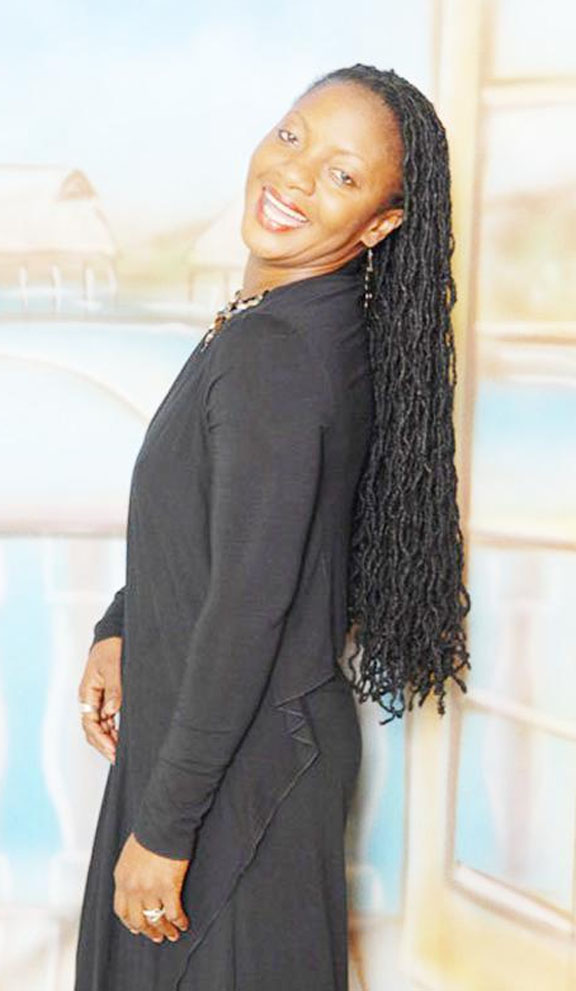By Jairo Rodrigues
Rosaline (Rose) October-Edun is a web of multiple talents that all sprang from her passion of dancing. She is deservingly called one of the most phenomenal artistes that hailed from Guyana and she has no intention of stopping what she does best anytime soon.
She grew up in a very large family. Her late father came from the East Coast village of Victoria and her mother from Berbice; together they raised 10 children, six boys and four girls – Rose being the last of the girls. Growing up with strict parents who were entrepreneurs on Regent Street since 1956, they were taught about the business then the next best thing was a round education.
Dancing was not acceptable by Rose’s father although her mother was as supportive as she could have been, given the nature of co-parenting. “I was able to get through dancing during the day at primary school, but would get away to go to the dance school for my afternoon classes,” she told The Scene in an interview. “I cannot tell you how many whippings I received and how many pieces of dance wear destroyed by my father because of this. But, I still went back. In retrospect, dance was my therapy because I really did not care what followed, after I attended dance classes.”

She recalls her father referring to dancing as “wining on stage” because of his lack of knowledge about dance and it was in the middle of the relationship between them until she completed high school. Later, when she became a professional dancer with the Guyana National Dance Company, she saw him bragging to friends with newspaper in hands, pointing to a picture of the company on the front page, saying, “this is my daughter, Rose, you know!” She said it was a funny scene, but true.
Throughout her career as a dancer in Guyana, she was exposed to ballet, modern, kathak, Caribbean, African, and traditional dance forms, taught by the best: Lavinia Williams, Philip McClintock, Linda Griffith, Cuban instructors Geraldo Lastra, Oretes Mejica, Georgia, and Atanasio Madero among others.
“Worth noting, is my general exposure to theatre by means of dance, meaning that dance opened the door and motivated me for venturing into some other experiences. Through dance, I have been able to hone other theatrical skills in drama and poetry reading, and even emceeing,” she said.
“I am forever grateful for life and being able to give when allowed to do so. Through these experiences, I am able to make my performances relative in ways that touch the audience in a real way.”

“By now, you would have recognized how much I love dancing. Dance is not an easy dance form, and granted it is not for everyone. I remember we had a saying that this person likes dance but dance did not like them,” she said.
Rose recalled that while she danced in Guyana, a solo was created especially for her by one of the visiting Cuban dance professors, Atanasio Madero. The name of the choreography was “Little Tornado” and it was riddled with difficult jumps and intense floor work.
She recalled too years of being the choreographer and later the Cultural Director and Trainer for the Ms Guyana New York pageants that occurred from around 1991 to 2000. These pageants with at least 15 to 20 contestants each year, were spearheaded by Negla Brandis and considered an example of Caribbean pageantry. “What was outstanding about this experience was playing a role in how the contestants blossomed into assertive and respectable young women. My contribution that reflected them becoming rounded for the lack of a better word – the way they walked, communicated, and most importantly, the development of an enhanced sense of self – gave me quite a blast of satisfaction and a sense of accomplishment,” she said.
Rose mentioned that whiles growing up she has always heard that as an artist, one needs something to “fall back on”. So, once she migrated, she was focused on attending college and majoring in dance. Unfortunately, in the first semester, the school she attended did not follow through with the promised dance workshop, and she decided to change her major because she realized that she did not need a degree in dance to prove that she was a dancer.

Currently, in addition to being back in school because, as she says – she likes learning, She is a professor at the State University of New York (SUNY) where she teaches social work-related courses to mostly adults returning to school for a career change. Also, she is a licenced master’s social worker (LMSW) engaged in private practice where she provides individuals, families and/or couple counselling for both children and adults. She also specializes in addictions counselling.
In 2011 she received her most recent award from Guyana Tri-State Alliance, spearheaded by Pat Jordan-Langford and the Brooklyn Borough’s President, Marty Markowitz for her contribution to Guyanese and Caribbean culture, especially in Brooklyn. In addition to receiving quite a few general awards from New York State & City council members for her contributions to the arts, the award that stands out for her dancing is the one received from the Guyana Cultural Association in 2005 for her preservation of and contribution to dance.
“I am humbled every time it happens. Most importantly, I would like for the undertone of my story to be revealed to not only the young and budding artists, but also to their caregivers.
The art form of dance helped to mould me and I feel strongly that because of those mentors like Teacher Stella [her teacher at St Angela’s Primary], Big Daphne [Rogers], dance instructors, and my parents and relatives, friends, and fans, that I am continuously able to pay homage to my country through the arts. I say this, because when I perform, I represent Guyana first, and then everything else. I note that I am able to own a dance vocabulary that was seriously given to me free of charge by Guyana, and for this I am so grateful,” she said.
Rose visited Guyana during the 2005 Great Flood and joined Guyanese Professional Social Workers in doing outreaches to affected villages. She left Guyana with a conviction to make a difference by offering words of comfort and her rendered presence in assuring the victims that there were numerous individuals who cared about what they were going through.
“Upon my return to the US, I came up with the idea of a dance concert and gathered a few former Guyanese dancers to give their talent to making this concert a success. The concept of the dance show was that attendees would bring food, clothing, school supplies, in other words, non-perishable items in exchange for an evening of entertainment in dance. It was a huge success because in addition to packing quite a few barrels during the show, monetary donations were made by those in attendance,” she recalled.
Rose was able to give four barrels to the Social Work Unit of the University of Guyana to aid the students in their outreach to the villages. The Guyana Cultural Association, of which she is a member, donated the remainder of barrels and the monetary donations to other agencies in Guyana for distribution to the flood victims.
“It is noteworthy to mention my relationship with UG’s Social Work Unit through Ms Barbara Holder-Thomas. It is through our relationship that I am a visiting lecturer at UG, and heard of the work that the social work students were doing in response to the floods. While indirectly making donations to the flood victims through UG, I was also able to make a direct donation of books to the Social Work Unit through which I am able to make annual presentations to both first and second year students. To be commended is everyone who contributed to making the donations possible,” Rose said.
Rose is currently the secretary’s assistant and a primary member of the Guyana Cultural Association of New York for the past nine years. She said the GCA’s mission includes documenting, showcasing, and celebrating the multiple roots of Guyana’s cultural heritage. She is also the co-chair for the Kweh Kweh Committee.
She explains that although, there are activities throughout the year, the highlight of GCA’s Folk Festival occurs at the end of summer, just before Labor Day, Monday which is the first Monday in September. Kweh Kweh Nite is usually held the Friday night before that Monday, and this year, it will be held August 31. Kweh Kweh Nite is quite nostalgic because not only the gathering serves as a reunion, but also learning and teaching experience for both Guyanese and foreigners in attendance. Foreigners in attendance are able to compare our Kweh Kweh to their culture. The attendees play the role of the family members for the make believe bride and groom-to-be, who are also volunteers from those in attendance, that is, if there is no real bride and groom-to-be. (On a couple of occasions, they have had real brides and grooms-to-be.) In addition to drums spicing up the Kweh Kweh, those in attendance are taught the movements and songs on the spot, and this becomes a night of fun. This event usually ends with what is referred to as a “folk party” where everyone is involved in singing and dancing folk songs. They usually leave the party soaking wet with their perspiration because they would have had such a great time indulging in Guyanese culture.
Asked about her future as a dancer, she replied “At times, the life of a dancer could be brutal because we suffer injuries that are not openly discussed. Fortunately for me, I suffered and suffer with bunions, only. About eight years ago, I had surgery done to remove bunions from both feet, after I was warned by the doctor that I should not go through with the surgery if I did not plan to stop dancing. Although I usually refer to dance as in my past life, I am still involved in performing as a soloist, and freelance choreographing. I really do not see myself stopping anytime soon but age does remind me that I need to hang up my dancing shoes for good.”





